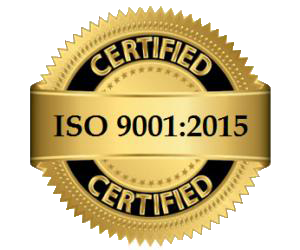Copper plating is a process that involves depositing an electrically conductive layer of copper onto the surface of another material. It is used for many purposes, including corrosion protection and enhancing electrical conductivity. Copper plating can be applied using various techniques such as chemical or electroplating. In addition to providing advantages from copper-plated surfaces, the use of bare copper wire also provides similar benefits in terms of electrical conductivity and low cost. The main advantages offered by both forms are that they provide excellent electrical insulation, good heat transfer characteristics, and increased corrosion resistance compared to other metals like aluminum or steel. Bare copper wires are also very economical when it comes to costs associated with installation as well as maintenance over time.
Uses of Copper Plating
Copper plating is also widely used for decorative purposes. It can be applied to a variety of surfaces including glass, wood, plastic, and metal. The copper layer provides an attractive finish that helps enhance the look of any item and adds a unique touch to it. Copper plating is often used in jewelry making as it has been found to last longer than traditional gold or silver platings without tarnishing easily. Copper plating is also commonly used on machinery parts where its ability to resist wear and tear makes it ideal for this application.
Another use of copper plating is in electrical wiring systems where the copper layer acts as an insulator against electricity while still allowing current flow through the wire. This insulation property makes copper wiring very safe for households and other applications with high-voltage power sources such as industrial installations or electric vehicles. Copper-plated wires are also much more resistant to fire than standard insulated cables which reduces the risk of injury from accidental electrocution due to short circuits or faulty wires in these types of settings.
Finally, many medical instruments like scalpels, tweezers, forceps, and needles are made using copper alloy materials coated with a thin layer of protective nickel-plated steel or brass so they will not corrode over time when exposed to bodily fluids during procedures.
Adherence Techniques
Chemical plating is a popular method of copper plating that involves coating the surface with an acid solution containing copper ions. This process occurs in two stages: first, the copper ions are suspended in a liquid and then applied to the surface through dipping or spraying. The second stage involves an electrochemical reaction that causes the ions to bind to the substrate material forming a strong bond. Chemical plating is typically used for decorative applications as it produces high-quality results with minimal effort required from the user.
Electroplating is another common technique used for applying a layer of copper onto different surfaces. During this process, DC electric current is passed through an electrolyte solution containing dissolved metal salts such as zinc chloride and sulfuric acid, resulting in the deposition of metals onto desired areas on conductive substrates like steel or aluminum alloys. As compared to chemical plating, electroplated coatings offer more precise control over thickness and uniformity of coverage; however, they also require more time and energy than chemical processes do due to their complex nature.
Copper Plating Benefits
Copper plating is an economical and low-maintenance solution to many metal surface finishing needs. Its ability to provide corrosion protection, electrical conductivity, heat transfer capabilities, and decorative finish makes it a popular choice for industrial, commercial, and consumer applications. The use of bare copper wire provides similar benefits but with the added advantage of being very cost-effective due to its low price per unit compared to other materials like aluminum or steel. In addition, installation costs associated with using bare copper wires tend to be much lower than those associated with more complex processes such as electroplating or chemical plating.
When choosing a method for coating surfaces with copper, there are several factors that must be taken into consideration including the desired level of protection needed and the amount of time available for the application process. If a quick turnaround is required then electroplating may be the best option whereas if long-term durability is important then chemical plating may offer greater reliability in terms of coverage and longevity. Additionally, different techniques can produce varying aesthetic results depending on what kind of finish you want; while electroplated coatings tend to have a uniform appearance chemical platings can create unique patterns depending on how they’re applied which may appeal more to certain consumers who desire something distinct from mass-produced items.
Overall, copper plating offers multiple advantages when used appropriately making it an attractive option for many projects requiring protective surfacing solutions at an affordable price point. Whether you need enhanced electrical conductivity for wiring systems or simply desire an aesthetically pleasing finish on your jewelry pieces – copper plating has got you covered!
Conclusion
In conclusion, copper plating offers a variety of benefits in many different industries and applications. Its electrical conductivity and heat transfer capabilities make it ideal for use on aircraft components, telecommunications networks, and consumer goods like jewelry items. The corrosion-resistant nature of the metal also ensures long-term reliability even when exposed to harsh environmental conditions. Additionally, bare tin-coated copper wire is an economical alternative that provides similar benefits at a lower price point than other materials such as aluminum or steel due to its low cost per unit area covered. Overall, copper plating can be an invaluable asset when applied correctly with consideration given to how much protection is needed and what type of finish is desired for each particular application.


